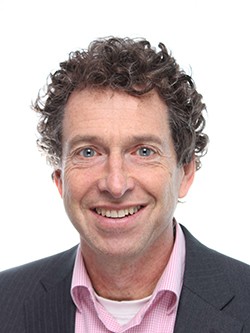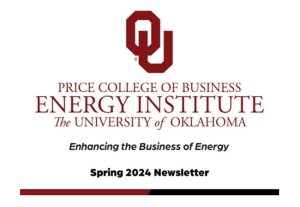Check out the most recent edition of the Energy Institute newsletter!
Q&A from the Corporate Office: Jan Willem Velthuijsen

Jan Willem Velthuijsen, Ph.D., chief economist at PwC Europe, shares about the energy transition in The Netherlands and Europe as a whole. Since 2014, Velthuijsen has worked with the institute's Executive MBA in Energy Program as an instructor of energy economics in Amsterdam.
Q: Moving from carbon-intensive fossil fuels to more sustainable forms of energy is an area of major focus in the Netherlands as it is across Europe. Since energy transition in the Netherlands is intertwined with Europe’s energy transition, how does the Netherlands navigate its own independent policies and actions to successfully attain its energy transition objectives?
A: Netherlands does this successfully by taking leadership and expecting others to follow. For example, a national carbon levy is being implemented in the Netherlands (on top of the EU ETS) because the EU ETS system is not effective in achieving the intended goals.
The attitude of NL is always “We cannot wait for Europe; we have to take the lead, and others will follow”. Then, there is also a lot of lobbying in Brussels to get others on board with our plans.
Q: How does the Netherlands' energy sector plan how best to unlock and scale up investment in the energy transition?
A: In the Netherlands, there is no shortage of money. Several institutional investors are eager to invest (driven by ESG ambitions), but business cases should be profitable in order to achieve scale. The government is trying to do this by addressing market failures – ‘reducing coordination costs’, ‘harmonizing regulation’, and making ‘platform investments e.g., in required infrastructure’. Naturally, the expectation is that business cases will become profitable because of this.
We can understand the approach using the railroads analogy from 1860s – the government procures the land and builds the tracks (funded by people through government bonds), and on the basis of this infrastructure, companies/the market picks up business cases with smaller pay back times i.e., 1-5 years. The high trust in government for setting up the basic infrastructure is (culturally) a very European thing (at least in comparison to the US).
Q: From your responses to (a) and (b) above, are there “some lessons learned” for the U.S.?
A: Ironically, in Europe we called Decarbonisation as our “man on the moon” project. So, unifying the society as a whole around this topic is something that we learnt from the U.S. So, the question remains – “who learns from who?”
Q: The Netherlands plays an important role in Europe as a hub for global energy trade, through its open market and integrated supply chains. However, natural gas currently accounts for 77% of the Dutch energy mix, according to data from The New Energy Coalition, most of which is fossil natural gas. For the Netherlands, please tell us briefly where do you see the alternative sources of energy coming from?
A : The main alternative sources of energy in the future are – (1) Wind power from the North Sea, (2) Eventually, Solar power from Southern Europe and North Africa, and in the long run (3) Turning most of this into Hydrogen.
Q: The energy transition offers tremendous opportunities for growth and new business models but also creates several challenges. What are some of the common strategies companies should follow to contribute to the goals of the national climate agreement as well as achieve sustainable growth?
A: Four key things -
1. Be comfortable with lower Returns on Investment at the beginning since a sustainable business temporarily has lower ROI
2. Look for partners to find synergies such as exchanging of excess heat
3. Communicate your ESG objectives (internally and externally) and make them real
4. Align your portfolio and investment decisions with ESG goals
Q: Should the current pandemic make us rethink or reshape our thoughts and policies on energy transition? If so, how?
A: Yes, it should. Currently, it is only about rescuing the business. But, when the moment comes to think about the future, there are 2 options: Do it in the black way or the green way. I am convinced that the green way has a longer future than the black way.
Q: With energy transition has come a plethora of ‘how to do” approaches put forth by management consultants, energy experts, etc. How does PwC differentiate itself from other consultants in this regard?
A: We try leading the debate by being very active in thought leadership.
Q: You have been teaching the Energy Economics course in our EMBA in Energy program since the program started in 2014. How would you describe your experience?
A: It has been very interesting to see the differences (first and foremost - cultural) between the Europe and the US, the differences between the role of government vs. business, and the interaction with clever people about an exciting topic.
Q: From a global energy perspective, what are the key takeaways you want your students to know from your course?
A: There is more than the Texas bubble.
Q: Over the years, have you seen a transition in the mindset of the students toward energy? If so, how?
A: Yes, gradually the importance of renewables is growing in the minds of students.
Q: When it comes to PwC, what are you most proud of?
A: We are proud of the fact that 220,000 people stay very close to our values.
Q: What do you do when you are not at work?
A: Reading and having FaceTime conversations with my grandchildren and children.


